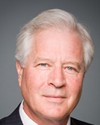Mr. Chair, thank you for this opportunity to discuss our audit of the acquisition of military helicopters. As you mentioned, I am accompanied today by Jerome Berthelette, Assistant Auditor General, and John Reed, Principal, who were responsible for this audit.
The process for acquiring complex military equipment is challenging and demanding. It is governed by a number of regulations, policies, and guidelines intended to ensure that the acquisition process is fair, open, and transparent, and that, in the end, it provides the military with the equipment it needs to carry out its vital role, both domestically and abroad, on time and on budget. It requires careful attention to planning and costing to ensure that all project elements come together.
Mr. Chair, we examined the acquisition of the maritime and medium-to-heavy lift helicopters with particular attention to operational requirements, assessment and management of risks, life cycle and planning, information for decision-making, and management board oversight.
We found that National Defence underestimated and understated the complexity and developmental nature of these helicopters, describing both as non-developmental and using off-the-shelf technologies. The modifications to the helicopters led to schedule delays and cost increases beyond the original plans.
National Defence did not fully comply with the oversight and approval framework set out in its project approval guide. Nor did it develop full life cycle plans and costs for these helicopters in a complete and timely way.
Finally, the manner in which PWGSC used the advance contract award notice did not comply with the applicable regulations and policies, and consequently, in our opinion, the process was not fair, open, and transparent.
We have recommended that National Defence and Public Works and Government Services Canada should each review and apply the lessons learned in these helicopter acquisitions to ensure that in the future the degree of development or modification of the equipment is reflected in approval documents and that the procurement strategy is tailored to reflect the complexity associated with the acquisition.
We also recommended that National Defence should start estimating the full life cycle costs earlier in its project management process, specifically at the options analysis phase, and that as the estimates change and become more precise, it should provide updates in the subsequent steps of the process. We further recommended that the preparation of life cycle plans should be started at the time of preliminary project approval.
We also made recommendations with respect to in-service support and management oversight within National Defence as described in the chapter.
We have made no recommendations on the management of the advance contract award notice, commonly referred to by its acronym, ACAN. Our position is that the manner in which the ACAN was used for the acquisition of the Chinook was not fair, open, and transparent. Given the significant difference between the information provided in the 2006 ACAN and what was finally agreed to in the contract in 2009, in our opinion, a second ACAN should have been issued.
As you know, the departments accepted all of our recommendations. Their management responses are included in the chapter.
Mr. Chair, when we appeared before this committee on Thursday, October 28, 2010, we suggested that the acquisition process may not necessarily be suited to the purchase of complex equipment requiring modifications or development. The committee may wish to discuss this further with officials from the departments in attendance today.
Mr. Chair, that concludes my opening remarks. We would be pleased to answer any questions from committee members.










